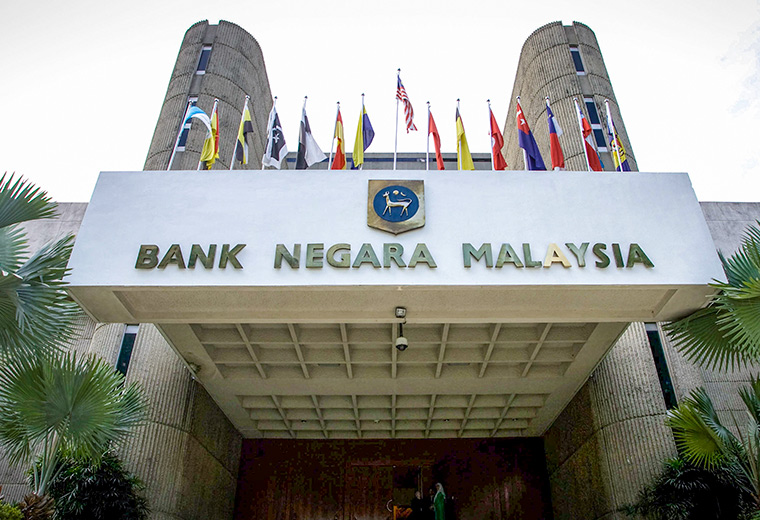PETALING JAYA: While downside risks continue to swamp Malaysia’s banking sector, which has suffered outlook downgrades by foreign rating agencies, Bank Negara Malaysia (BNM) has affirmed the resilience of the financial system amid the Covid-19 pandemic.
Last week, Moody’s Investor Services and Fitch Ratings changed their outlooks for the Malaysian banking system to negative from stable, saying that asset risks will increase while their profitability declines.
Fitch said it is wary of growing strains in the banks’ operating environment.
“Fitch is wary of as-yet unidentified weaknesses in the manufacturing, trade, transport and hospitality sectors that aggregate to almost 20% of banks’ exposures and household lending, which accounts for another 58%.
“Existing general provision buffers are thin, averaging little more than 0.7% of net loans, indicating that incremental credit impairments are likely to have a high pass-through effect on earnings,” it said in its statement.
However, HLIB Research banking analyst Chan Jit Hoong said that while he has a neutral rating for the sector, the banks are well positioned with adequate buffers.
“We take great comfort that the banking system is well poised to absorb the potential damage from Covid-19, given their prudent capital and liquidity buffers built up over the years. However, near-term headwinds will put a dent on banks’ profitability,” he told SunBiz.
Chan said this is compensated by the sector’s inexpensive valuations, as its price-to-book (P/B) ratio is now below -2SD (standard deviation) and the global financial crisis’ (GFC) level.
“We like banking stocks that were acutely bashed down and especially those with P/B below 1x, GFC’s trough, and -2SD; two of our buy calls meeting this criteria are CIMB Group Holdings Bhd and Alliance Bank Malaysia Bhd, making them our preferred picks.”
The need for a potential third stimulus package has already been put forth, which raises the question: Will banks be able to withstand the further strain should a third stimulus be announced?
“Really, it depends on how the third stimulus is structured. But for now, let’s wait and see whether the second stimulus is sufficient for us to weather this difficult time. It’s still early days to think about a third stimulus,” Chan said.
TA Research said the banking sector is its second biggest contributor to earnings cut of stocks under its coverage for 2020 at 24.3%, after the aviation sector (27.4%). It retained its underweight recommendation on the sector.
“We continue to foresee further downside risk in earnings, as topline growth remains affected by overall weak sentiments and rising macro uncertainties driven by risks of a protracted trade war, coronavirus outbreak, domestic political turmoil and concerns over weakening oil prices.
“We also expect asset quality to deteriorate due to a confluence of negative factors weighing heavily on the sector and economy,” said TA.
However, it noted that there have been several successive measures by BNM since January 2020, including two Overnight Policy Rate cuts, a 100 basis point statutory reserve requirement ratio reduction, and a lowering of the net stable funding ratio, which are all to help ease the potential capital and liquidity constraints in the system due to the ongoing macro challenges.
It said the most recent automatic moratorium on all loan/financing repayments/payments, principal and interest for a period of six months would help ease the burden of the rakyat, and keep a lid on asset quality.
Its top buy is CIMB while its top sell is Hong Leong Bank Bhd.
BNM governor Datuk Nor Shamsiah Mohd Yunus has defended the country’s financial system, saying that it is well positioned to support the economy, given the strong buffers built up over the years.
In presenting its Financial Stability Review report to the media last week, she highlighted that banks have strong capital positions, with a total capital ratio of 18.4% and excess capital buffers of RM121 billion as at February 2020.
The sector has ample liquidity buffers, with a LCR of 148%, and adequate provisions set aside with loan loss coverage ratio of 125% as at February 2020.
Stress tests affirm resilience of the financial system even under severe economic conditions, while capital buffers are sufficient to absorb potential losses.
Nor Shamsiah said the central bank will ensure uninterrupted financial intermediation in the environment of heightened financial market volatility.
“There is ample liquidity in the banking system with continuous support by BNM via its open market operations and domestic financial market remains resilient relative to regional peers with healthy trading volumes,” she said.










